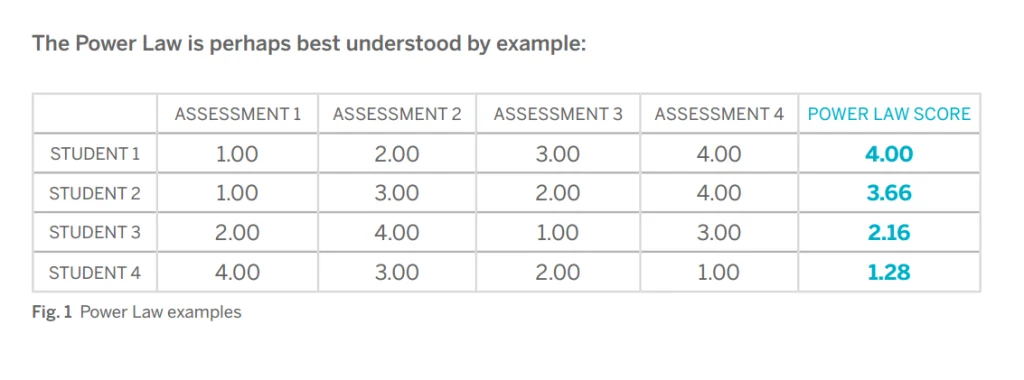One of the trickiest aspects of mastery-based grading is the way that scores are calculated in the system. There are pros and cons to each approach, so it’s a matter of finding the proper balance between the philosophical and the practical. JumpRope supports seven different strategies/algorithms, and it’s up to the teacher, school, or district to choose.
The most important numbers in JumpRope’s gradebook are the standard-level calculations per student. These are based on one or more assessments, and answer that most-important question: Given all of the evidence, what level of mastery has this student demonstrated? This white paper looks at the seven calculation methods available in our gradebook and discusses how they work on a technical level, as well as the advantages and challenges associated with each one. Here’s an example of how one might approach determining an overall grade using an algorithm like the Power Law:

JumpRope supports seven built-in calculation methods, each with it’s own options, advantages, and challenges. Download the white paper for a full survey of the different strategies to aggregate mastery in meaningful ways, as well as understand what JumpRope’s software offers teachers and administrators in terms of custom calculations.




